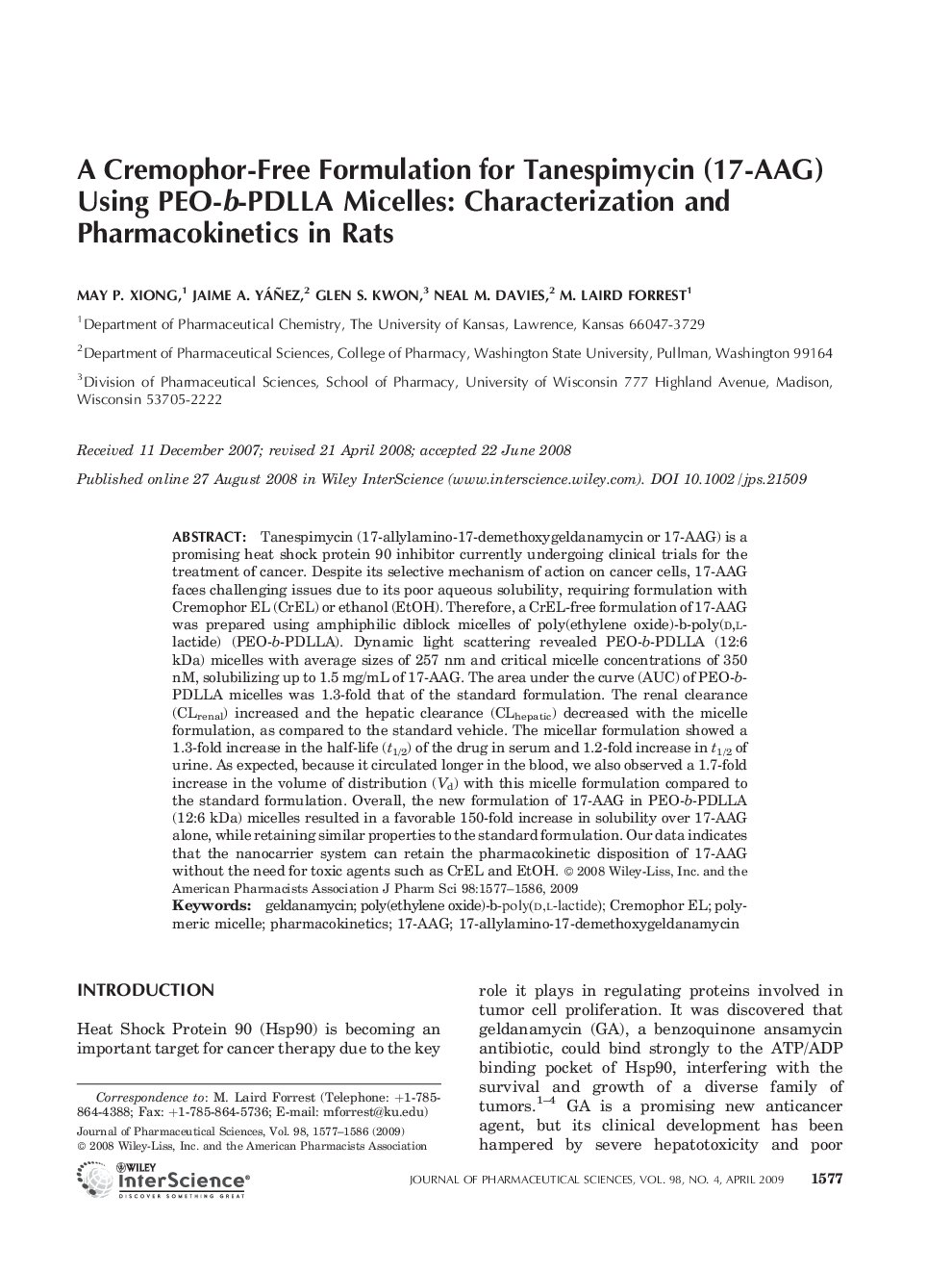| Article ID | Journal | Published Year | Pages | File Type |
|---|---|---|---|---|
| 2487107 | Journal of Pharmaceutical Sciences | 2009 | 10 Pages |
Abstract
Tanespimycin (17-allylamino-17-demethoxygeldanamycin or 17-AAG) is a promising heat shock protein 90 inhibitor currently undergoing clinical trials for the treatment of cancer. Despite its selective mechanism of action on cancer cells, 17-AAG faces challenging issues due to its poor aqueous solubility, requiring formulation with Cremophor EL (CrEL) or ethanol (EtOH). Therefore, a CrEL-free formulation of 17-AAG was prepared using amphiphilic diblock micelles of poly(ethylene oxide)-b-poly(d,l-lactide) (PEO-b-PDLLA). Dynamic light scattering revealed PEO-b-PDLLA (12:6Â kDa) micelles with average sizes of 257Â nm and critical micelle concentrations of 350 nM, solubilizing up to 1.5Â mg/mL of 17-AAG. The area under the curve (AUC) of PEO-b-PDLLA micelles was 1.3-fold that of the standard formulation. The renal clearance (CLrenal) increased and the hepatic clearance (CLhepatic) decreased with the micelle formulation, as compared to the standard vehicle. The micellar formulation showed a 1.3-fold increase in the half-life (t1/2) of the drug in serum and 1.2-fold increase in t1/2 of urine. As expected, because it circulated longer in the blood, we also observed a 1.7-fold increase in the volume of distribution (Vd) with this micelle formulation compared to the standard formulation. Overall, the new formulation of 17-AAG in PEO-b-PDLLA (12:6Â kDa) micelles resulted in a favorable 150-fold increase in solubility over 17-AAG alone, while retaining similar properties to the standard formulation. Our data indicates that the nanocarrier system can retain the pharmacokinetic disposition of 17-AAG without the need for toxic agents such as CrEL and EtOH.
Related Topics
Health Sciences
Pharmacology, Toxicology and Pharmaceutical Science
Drug Discovery
Authors
May P. Xiong, Jaime A. Yáñez, Glen S. Kwon, Neal M. Davies, M. Laird Forrest,
